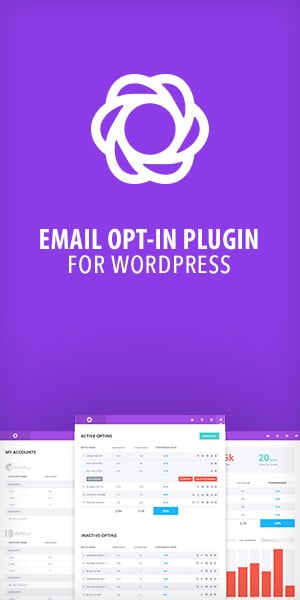Social media for market research is a powerful tool, with 81% of marketers using it to gain consumer insights. This post explores how businesses can tap into social platforms to understand consumer behavior, track trends, and gather competitive analysis. Discover techniques to leverage platforms like Facebook, Twitter, and Instagram for actionable data that can sharpen your marketing strategy and improve decision-making.
Understanding Social Media Market Research
Social media market research has transformed how businesses gather insights. It’s not just about data collection; it involves understanding and interpreting social interactions to make informed decisions. This section will delve into what social media market research encompasses, the benefits it offers, and key metrics that drive analytics.
What is Social Media Market Research?
Social media market research involves analyzing the vast amounts of data generated on social platforms. It’s a method to understand trends, consumer behaviors, and public perceptions. This research taps into conversations happening online, providing real-time insights into what people think and feel about brands, products, and services.
The process includes monitoring social media channels, analyzing content, and extracting valuable insights. Social media platforms like Facebook, Twitter, Instagram, and LinkedIn serve as rich data sources. They offer a window into consumer preferences and emerging trends. By examining user interactions, businesses can gain a deep understanding of market dynamics and customer sentiment.
Unlike traditional market research, social media research is dynamic and constantly evolving. It allows companies to stay ahead by quickly responding to market changes. The real-time nature of social media provides immediate feedback, enabling businesses to adapt and refine their strategies promptly.
Benefits of Using Social Media for Market Insights
Social media platforms are a goldmine for market insights. They offer several benefits over traditional research methods. First, they provide access to a vast audience, ensuring diverse and inclusive data. Social media insights are not limited by geographical boundaries, making them ideal for global market analysis.
Another advantage is cost-effectiveness. Conducting surveys and focus groups can be expensive and time-consuming. Social media research, however, requires fewer resources and delivers quicker results. It also provides access to unsolicited consumer opinions, offering a more authentic view of consumer sentiment.
Social media also supports trend identification. By analyzing trending topics and hashtags, businesses can spot emerging trends and adapt their strategies accordingly. This ability to anticipate market shifts gives companies a competitive edge.
Key Metrics in Social Media Analytics
Social media analytics involves tracking various metrics to gauge performance and insights. These metrics can be broadly categorized into engagement, reach, and sentiment analysis.
Engagement metrics include likes, shares, comments, and mentions. They indicate how well the content resonates with the audience. High engagement suggests that the content is relevant and valuable to the consumers.
Reach metrics measure the size of the audience exposed to the content. This includes impressions, followers, and reach itself. Understanding reach helps businesses assess their brand visibility and potential audience size.
Sentiment analysis examines the emotions expressed in user-generated content. It categorizes comments into positive, negative, or neutral. This metric is crucial for understanding public opinion and consumer attitudes toward a brand or product.
Strategies for Effective Social Media Market Research
To harness the full potential of social media research, businesses need effective strategies. This section explores how to utilize social listening tools, analyze consumer sentiment data, and conduct competitor analysis through social platforms to gather actionable insights.
Utilizing Social Listening Tools
Social listening tools are essential for monitoring online conversations. They help businesses track mentions, keywords, and trends relevant to their industry. Tools like Hootsuite, Brandwatch, and Sprout Social offer powerful analytics capabilities.
These tools can identify patterns and emerging topics. They provide real-time alerts, enabling businesses to respond swiftly to consumer concerns or capitalize on trending discussions. Social listening tools also help in tracking brand health and managing reputation.
By setting up alerts and filters, companies can focus on specific topics or competitors. This targeted approach ensures that the data collected is relevant and actionable. Social listening is invaluable for understanding consumer needs and preferences.
Analyzing Consumer Sentiment Data
Consumer sentiment data provides insights into how consumers feel about a brand or product. Analyzing this data helps in understanding customer satisfaction and identifying areas for improvement. Sentiment analysis tools like Lexalytics and MonkeyLearn can automate this process.
Positive sentiment indicates consumer satisfaction and loyalty, while negative sentiment highlights potential issues. By addressing negative feedback, businesses can improve their products and services. Sentiment data also helps in crafting targeted marketing messages that resonate with the audience.
Tracking sentiment over time can reveal trends in consumer perception. This information is vital for assessing the effectiveness of marketing campaigns and strategies. It also guides product development by highlighting features that consumers value or dislike.
Competitor Analysis Through Social Platforms
Social media is an excellent platform for competitor analysis. By monitoring competitors’ activities, businesses can identify their strengths and weaknesses. This analysis helps in understanding the competitive landscape and benchmarking performance.
Competitor analysis involves tracking their social media content, engagement levels, and audience interactions. Tools like SEMrush and BuzzSumo can provide insights into competitors’ strategies and content performance. This information is crucial for developing differentiated marketing strategies.
Understanding competitors’ approaches allows businesses to identify gaps in the market. It also reveals opportunities for innovation and differentiation. By analyzing competitors, companies can refine their own strategies and enhance their market position.
Implementing Social Media Insights into Business Strategy
Social media insights are not just informative; they are transformative. When integrated into business strategy, they drive growth and innovation. This section discusses aligning social insights with product development, enhancing customer engagement, and leveraging feedback for strategic decisions.
Aligning Social Insights with Product Development
Social media insights play a crucial role in product development. They provide a direct line to consumer preferences and pain points. By listening to social conversations, businesses can identify unmet needs and develop products that align with consumer expectations.
Incorporating social insights into product development ensures that new offerings are relevant and competitive. Feedback from social media can guide feature enhancements and product iterations. It also helps in validating product concepts before launch, reducing the risk of market failure.
Social media also facilitates co-creation with consumers. By involving consumers in the development process, businesses can create products that truly resonate with the target audience. This collaborative approach builds consumer loyalty and enhances brand reputation.
Enhancing Customer Engagement Using Social Data
Social data provides insights into consumer behavior and preferences, enabling personalized engagement strategies. By understanding consumer interests, businesses can tailor their content and communication to resonate with their audience.
Personalized engagement fosters a stronger connection with consumers. It enhances customer satisfaction and drives brand loyalty. Social data also helps in identifying brand advocates and influencers who can amplify marketing efforts.
Engaging consumers through social media creates a two-way communication channel. It allows businesses to gather feedback, answer queries, and address concerns promptly. This responsiveness builds trust and strengthens consumer relationships.
Leveraging Social Media Feedback for Strategic Decisions
Social media feedback offers valuable insights into consumer opinions and market trends. By analyzing this feedback, businesses can make informed strategic decisions that drive growth and innovation.
Feedback helps in identifying areas for improvement and innovation. It guides product development, marketing strategies, and customer service enhancements. Businesses can also use feedback for crisis management and reputation building.
Strategic decisions informed by social media feedback are more likely to succeed. They are grounded in real consumer insights and reflect market realities. By leveraging social media feedback, businesses can stay agile and responsive to changing market conditions.
Conclusion
Social media market research involves gathering information from various platforms to gain insights into consumer behavior and preferences. Benefits include accessing real-time data, understanding consumer sentiment, and identifying trends. Key metrics in social media analytics focus on engagement, reach, and sentiment analysis. Effective strategies involve using social listening tools, analyzing sentiment data, and conducting competitor analysis. Insights from social media can guide product development, enhance customer engagement, and inform strategic business decisions.
FAQ
How can social media be leveraged for effective market research?
Social media offers a wealth of real-time insights into consumer behavior and preferences. By actively engaging with audiences through polls, surveys, and interactive content, businesses can gather valuable feedback. Monitoring discussions and trends provides a deeper understanding of consumer needs and emerging market opportunities.
What are the best social media platforms for conducting market research?
Platforms like Facebook, Twitter, Instagram, and LinkedIn are ideal for market research. They offer diverse user demographics and robust analytics tools. Facebook and Instagram provide rich visual content and community engagement, while Twitter excels in real-time sentiment tracking. LinkedIn is great for B2B insights.
How does sentiment analysis on social media aid in understanding customer opinions?
Sentiment analysis helps businesses gauge public opinion by analyzing text data from posts, comments, and reviews. It identifies positive, negative, or neutral sentiments, providing a clear picture of customer satisfaction and areas for improvement. This aids in refining products and strategies based on consumer sentiment.
What tools are available for analyzing market trends on social media?
Tools like Hootsuite, Sprout Social, and Brandwatch offer detailed analytics for tracking market trends. These platforms provide insights into engagement rates, audience demographics, and trending topics. Google Trends and BuzzSumo are also useful for identifying popular content and emerging trends.
How can businesses ensure data privacy while conducting social media research?
Businesses should adhere to data protection regulations like GDPR and CCPA. Using anonymized data and obtaining consent before collecting information is critical. Employing secure data storage solutions and regularly updating privacy policies ensures compliance and builds consumer trust.
What are common challenges in using social media for market research?
Challenges include dealing with data overload and ensuring data accuracy. Social media data can be noisy and biased, requiring careful analysis and verification. Keeping up with platform algorithm changes and managing resource allocation are also significant hurdles for businesses.




